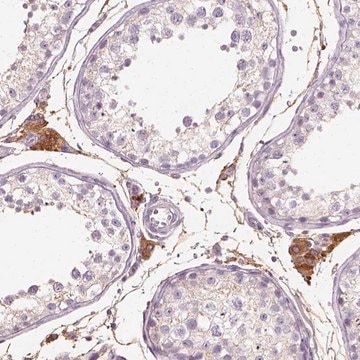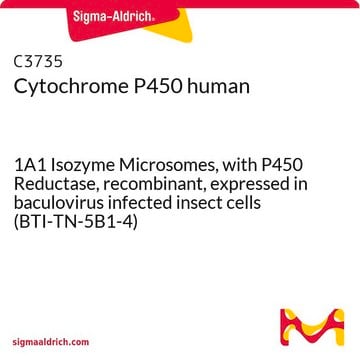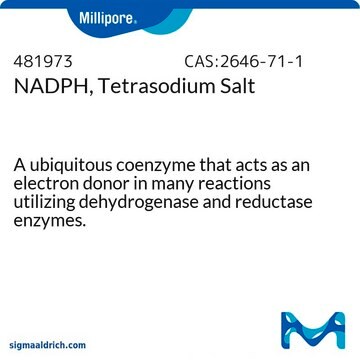F7807
Prostaglandin F Synthase human
recombinant, expressed in E. coli, ≥90% (SDS-PAGE)
Synonym(s):
17-beta-hydroxysteroid dehydrogenase type 5, AKR1C3, aldo-keto reductase family 1 member C3, indanol dehydrogenase
About This Item
Recommended Products
recombinant
expressed in E. coli
Quality Level
description
contains a C-terminal hexahistidine tag
Assay
≥90% (SDS-PAGE)
form
liquid
specific activity
≥0.4 μmol/mg protein
mol wt
~37 kDa
NCBI accession no.
shipped in
dry ice
storage temp.
−70°C
Gene Information
human ... AKR1C3(8644)
Application
Biochem/physiol Actions
Unit Definition
Storage Class Code
10 - Combustible liquids
WGK
WGK 1
Flash Point(F)
Not applicable
Flash Point(C)
Not applicable
Certificates of Analysis (COA)
Search for Certificates of Analysis (COA) by entering the products Lot/Batch Number. Lot and Batch Numbers can be found on a product’s label following the words ‘Lot’ or ‘Batch’.
Already Own This Product?
Find documentation for the products that you have recently purchased in the Document Library.
Our team of scientists has experience in all areas of research including Life Science, Material Science, Chemical Synthesis, Chromatography, Analytical and many others.
Contact Technical Service








